
Topics
Guests
- Bruce Cumingsprofessor at the University of Chicago. He’s the author of several books on Korea, including Korea’s Place in the Sun: A Modern History and North Korea: Another Country. His forthcoming book is called The Korean War.
Tensions continue to rise on the Korean Peninsula over North Korea’s alleged sinking of a South Korean warship two months ago. North Korea has said it will sever all ties with South Korea and repeal a non-aggression agreement between the two countries. South Korea, meanwhile, has announced a stop to most trade with North Korea and is seeking action against Pyongyang at the United Nations Security Council. The South Korean navy is reported to be conducting a major anti-submarine drill. We speak to University of Chicago historian Bruce Cumings, author of several books on Korea. [includes rush transcript]
Transcript
JUAN GONZALEZ: As tensions continue to rise between North and South Korea over the sinking of a Southern navy boat in March, the South Korean navy is reported to be conducting a major anti-submarine drill. An investigation last week found that the South Korean ship, the Cheonan, was sunk by a torpedo from the North. But this has been denied by North Korea. Forty-six South Korean sailors were killed when the ship sank.
On Wednesday, Secretary of State Hillary Clinton traveled to the South Korean capital of Seoul and met with the country’s foreign minister and president. She said there was, quote, “overwhelming” evidence that North Korea was to blame for the sinking of the Cheonan and urged Pyongyang to halt its, quote, “policy of belligerence.” She also urged China to back the international community and chastise North Korea for its actions.
SECRETARY OF STATE HILLARY CLINTON: This was an unacceptable provocation by North Korea, and the international community has a responsibility and a duty to respond. We call on North Korea to halt its provocations, end its policy of threats and belligerence toward its neighbors, and take steps now to fulfill its denuclearization commitments and comply with international law.
AMY GOODMAN: Meanwhile, South Korea has announced a stop to most trade with North Korea and is seeking action against Pyongyang at the United Nations Security Council. North Korea announced Tuesday it’s cutting all ties with the South and warned Seoul against any provocations and military exercises. The following announcement is an excerpt from Pyongyang’s state-run television news.
PYONGYANG STATE-RUN TV NEWS: If South Korea takes any provocative actions against us in terms of political, economic and military measures backed by the United States, we will respond with a war for justice. We will remove all the human trash from the Korean Peninsula and build up a united Korea.
AMY GOODMAN: Well, for more on this story, we’re joined now from Chicago by historian Bruce Cumings, professor at the University of Chicago, author of a number of books on Korea, including Korea’s Place in the Sun: A Modern History and North Korea: Another Country. His forthcoming book is called The Korean War.
We welcome you to Democracy Now!, Professor Cumings. What about what has happened? What do you understand? Do you believe North Korea sank the ship?
BRUCE CUMINGS: Well, first, I want to say that I think this is just another tragedy laid at the door of a division of Korea sixty-five years ago. Forty-six Koreans have died again. Twenty-five years ago, I had a private dinner with Kim Dae-jung when he was a dissident and before he became president in 1998, and I remember so well that he said, “Not one more Korean should die for the division of this country.” So we’re talking about a very old conflict.
And this particular incident is just ripped out of context, the context of a continuing war that has never ended. Just an armistice holds the peace. But in the case of this particular incident, which happened very close to the North Korean border, we’ve had incidents like this, somewhat different ones, but with large loss of life, going back more than ten years. In 1999, a North Korean ship went down with thirty sailors lost and maybe seventy wounded. That’s a larger total of casualties than this one. And last November, a North Korean ship went down in flames. We don’t know how many people died in that. This is a no man’s land, or waters, off the west coast of Korea that both North and South claim. And the Cheonan
ship was sailing in those waters when it was hit by a torpedo.
We have no idea what went on before that. In the past, these several incidents, people have not tried to inquire as to who started it. We don’t know whether the Cheonan had fired on some North Korean ship, and then a North Korean submarine hit it with a torpedo. We don’t even know if the North Koreans fired the torpedo. I imagine they probably did, but the evidence so far has been dribbled out very slowly. They claim that there’s a — there is North Korean letters, or Korean letters in North Korean orthography, on a propeller of this torpedo. But I haven’t seen photos of that, and other experts haven’t, either. So I think we have to wait to assess responsibility.
But I do think, regardless of whether the North Koreans fired it or not, this incident is being blown way out of proportion. Secretary of State Clinton referred to it a couple days ago as unprovoked aggression, which of course is what we accused the North of when the Korean War started sixty years ago. I noticed in your clip she’s now simply calling it a provocation. I do think there’s probably an attempt on the part of the Obama administration to draw down the tension over this. But the fact is, you have a structure in Korea that’s ongoing since the Korean War, where these incidents can happen and you can have a ratcheted-up escalation that might result in a second Korean War. So it’s imperative to try to end this war and find a way to have a dialogue with the North, so that the Peninsula can be denuclearized and these incidents don’t come along every once in awhile and raise such a threat to peace.
JUAN GONZALEZ: Now, Bruce Cumings, Secretary of State Clinton and, of course, teh South Korean government is saying that the investigation was thorough and complete and that there is no doubt. You’re saying that you’re questioning that. What are some of the key aspects of why you’re questioning how valid the investigation has been up 'til now?
BRUCE CUMINGS: All I'm saying is we’re only relying on an investigation that hasn’t been released by either the South Korean or the American government. They’ve released excerpts, but they haven’t given — it’s apparently a very long report, over a hundred pages. It’s been given to the Russians and the Chinese. It would be interesting to read that report and look at the evidence. The fact that a North Korean torpedo cut the ship in half doesn’t mean a whole lot, in that North Korean torpedoes are lying all over the bottom of this West Sea, which is very shallow as a result of previous North Korean ships having been sunk by the Southern side.
I think it’s — I’m sure it’s a 95 percent case that the US and South Korea are right that North Korea fired this torpedo. Let’s say they did. The fact is, our government has not pointed out the background that I just pointed out, the sinking last November, the clashes in 1999 and 2002. This is a no man’s land, where the US and South Korea demarcated a so-called Northern limit line unilaterally. The North has never accepted it. The North says that this area is under the joint jurisdiction of the North and South Korean militaries. So you have an incident waiting to happen. We’ve had many before. And American intelligence people know that in the late spring, crabs turn up by the thousands in this area, and the North Koreans and South Korean fishermen fight over the region.
I, myself, expected some sort of an incident this spring. It just came a little bit early. And it may have come in March because the US just completed Operation Full Eagle, which is an annual joint military exercise with the South Koreans, including naval exercises south of this particular region. About 26,000 soldiers were involved in this. The North Koreans hate these exercises and see them as a prelude to a possible attack. That also hasn’t been reported in our press. So there’s a context here which maked this incident a very unfortunate one in the loss of life, but it’s not unprecedented in loss of life, and it should never have been blown so out of proportion that now you essentially have all the progress of the last ten years in North-South relations destroyed.
JUAN GONZALEZ: And what are China and Japan saying about the incident?
BRUCE CUMINGS: Well, there was a very interesting article in the New York Times today, where the reporter made a distinction between the Chinese leadership under Hu Jintao and the People’s Liberation Army, which apparently delivered a very sharp rebuke to the gigantic 200-member American delegation that’s in Beijing. The PLA fought in Korea with the North Koreans. There are a lot of hard-liners in the Chinese army that rather like North Korea for its resistance to the United States. They like having an ally on the Korean Peninsula. And so, I think it’s highly unlikely that China is going to join with the US in some UN resolution or, you know, the umpteenth sanction out of the UN placed on North Korea.
AMY GOODMAN: Last question, fifteen seconds, what should the US do right now?
BRUCE CUMINGS: The US should go back to about 1999, 2000, when, led by President Kim Dae-jung, President Clinton had not only kept their plutonium frozen for seven years, but was on the verge of also buying out their missiles.
AMY GOODMAN: We have five seconds.
BRUCE CUMINGS: Secretary of State Albright went to meet — went to meet Kim Jong-il back then in 2000. I think we should dust off those plans and try to revive a détente on the Peninsula.
AMY GOODMAN: We’ll leave it there. Professor Cumings, thank you.



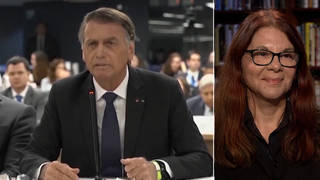
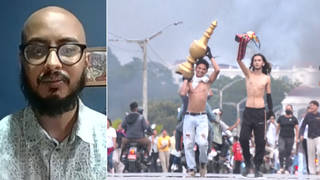
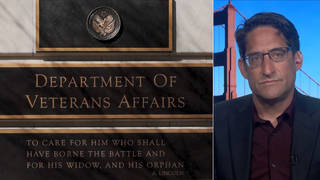
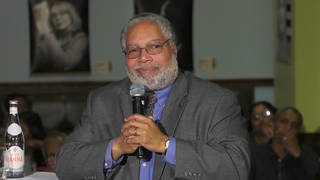

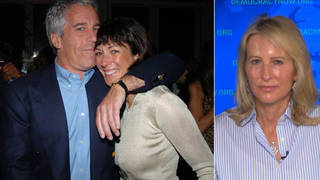



Media Options